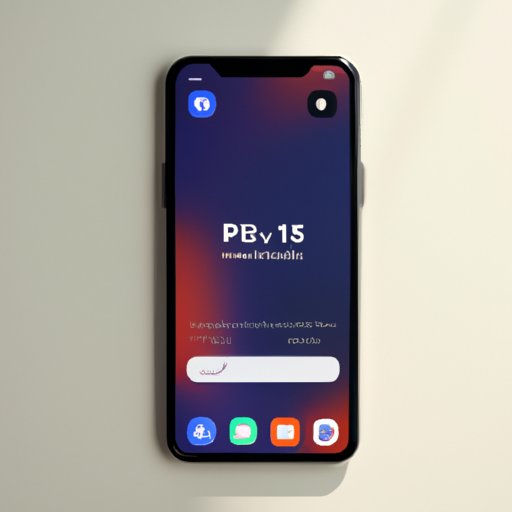Introduction
Screenshots are an essential feature of modern technology, especially when it comes to smartphones. It allows us to capture and save important information, images, and messages that we don’t want to forget. iPhones have become increasingly popular over the years, and with new models come new features and different ways to take screenshots.
However, many people struggle with taking screenshots on their iPhones, a common problem that can cause frustration and confusion. That’s why we have created this guide to help you understand how to take a screenshot on your iPhone. This guide will also provide tips and advice on how to use screenshots effectively, troubleshooting problems, and alternative methods.
Step-by-Step Guide
Here’s a step-by-step guide on how to take a screenshot on an iPhone:
For iPhones with a home button:
- Open the app or screen that you want to take the screenshot of.
- Press and hold the Home button and the Power button simultaneously.
- Release both buttons after a few seconds once the screenshot has been taken and confirmed by a visible flash on the screen.
- The screenshot will then be saved in the Photos app, under the Screenshots album.
For iPhones without a home button:
- Open the app or screen that you want to take the screenshot of.
- Press and hold the Side button (on the right-side of your iPhone).
- At the same time, press and release the Volume Up button on the left-side of your iPhone.
- Release both buttons after a few seconds once the screenshot has been taken and confirmed by a visible flash on the screen.
- The screenshot will then be saved in the Photos app, under the Screenshots album.
Utilizing Screenshots
Screenshots can be used in various ways to enhance productivity, organization, and entertainment. Here are some ways to use screenshots on your iPhone:
Editing screenshots using iPhone tools:
You can use the editing feature in the Photos app to enhance and customize your screenshots by cropping, adding text, or highlighting important information.
Recognizing and removing personal information before sharing:
Before sharing screenshots, make sure you manually crop out any sensitive information, such as personal data or sensitive messages.
Using screenshots for organization, file management or productivity:
Screenshots can be saved and added to an inventory for cataloging items like receipts, confirming payments, or tracking deliveries. Taking screenshots of links, addresses, and important information helps provide a visual reference for future use.
Alternative Methods
If the above methods of taking screenshots do not work, you can use alternative methods like AssistiveTouch or Siri. Here’s how:
Using the AssistiveTouch feature:
AssistiveTouch is an accessibility feature on the iPhone that allows you to customize an array of actions, including taking screenshots. To use this feature, follow these steps:
- Go to Settings > General > Accessibility > Touch
- Select AssistiveTouch and turn it on.
- Customize an action, record it as a single tap, or launch an action menu to find the Screenshot action.
Using Siri to take a screenshot:
You can also take a screenshot by using Siri. Just say “Hey Siri, take a screenshot” to instantly take a screenshot of your current screen.
Creative Uses
Screenshots can be useful in various ways that you might not be aware of. Here are some creative ways you can use screenshots on your iPhone:
Using screenshots as evidence for customer service complaints:
Screenshots can be used to provide proof for issues with products or services. If you have received an email with no response from the company, try sending a screenshot of the client service ticket and email chain for evidence of your problems.
Taking screenshots of maps or directions for offline use:
If you are going to an area with no available internet or a low signal, screenshots of maps and directions can be a helpful solution for following directions.
Troubleshooting Issues
There are a few potential issues you might run into when trying to take a screenshot on your iPhone. Here’s how to troubleshoot these problems:
Privacy and Security settings blocking screenshots:
If you find that you are unable to take screenshots of certain apps or content, check your privacy settings. Go to Settings > Privacy > Screen Recording and turn it on.
Error messages due to low memory:
If you get an error message that says, “Cannot take screenshot, not enough storage”, try freeing up space by deleting unused apps or media files, or consider upgrading your storage.
Battery issues preventing screenshots:
If your iPhone battery is low, it might not allow you to take a screenshot. You can check your battery percentage by swiping down from the right corner on your screen.
Conclusion
In conclusion, screenshots are a crucial tool for iPhone users. With this guide, you now know how to take screenshots on your iPhone, how to utilize and edit them, as well as some of the alternative methods for taking screenshots. Keep in mind effective ways to use screenshots include organization, file management and productivity. Finally, use the troubleshooting steps if you encounter any problems and start making use of this essential feature today.
